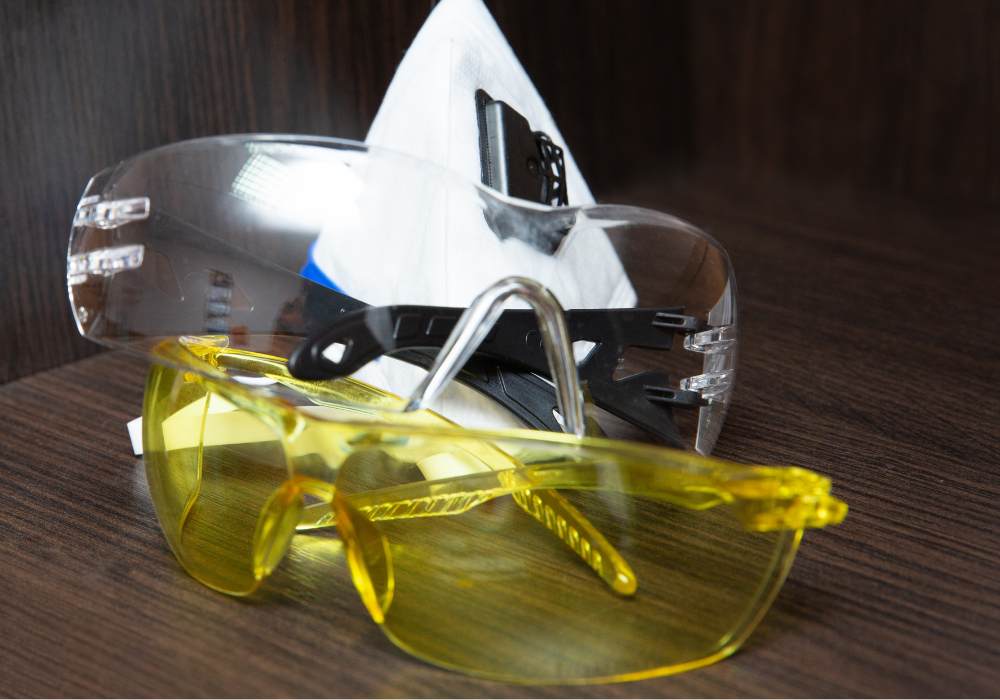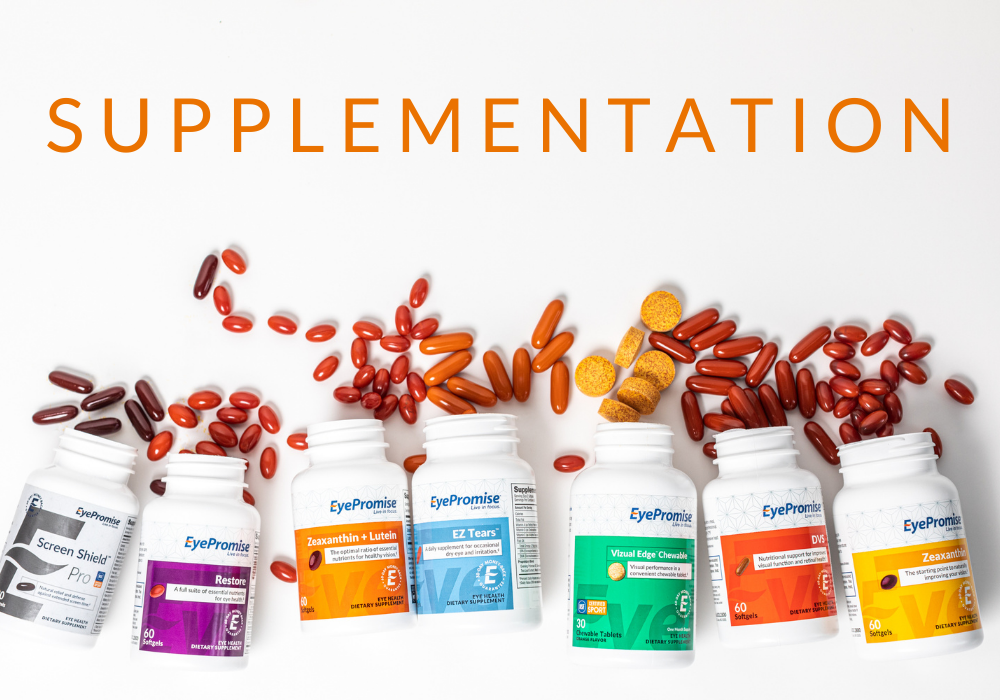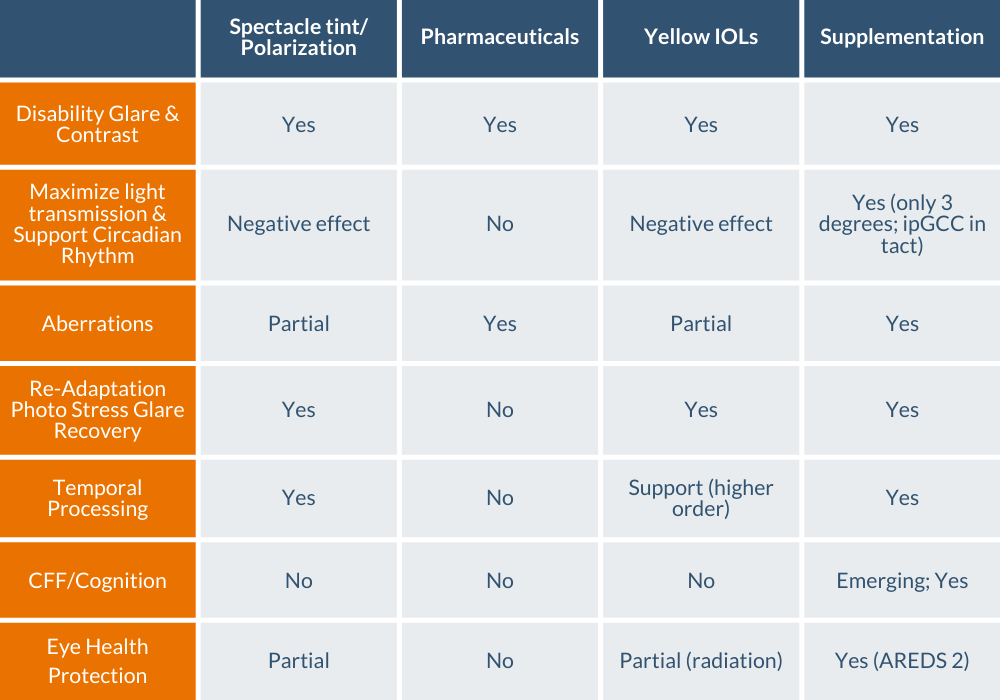The Science of Improved Visual Performance
Posted by EyePromise on Apr 21st 2022
April is Sports Eye Safety Month, and we often talk about visual performance and how to improve it. Dr. Graham Erickson, leading expert in sports vision, took the time to detail the ins and out of visual performance, how to improve it, and why each method of improving visual performance works differently. Watch his webinar discussing these topics and more or continue reading for a synopsis.
What All Visual Performance Aids Are Trying to Do

Many visual performance spectacles have a yellow tint, but why did they choose yellow as opposed to other colors? Yellow filters are known to have optical effects that may improve visual performance. Yellow-tinted lenses transmit longer wavelengths of light and filter out the shorter wavelengths that scatter more easily within the eye while still allowing most visible light through. This helps eliminate any “noise” by reducing what’s known as “internal glare” and increase the eye’s ability to focus clearly. Yellow tints have also been shown to have a brightening effect in low-light situations.
Yellow tints can help improve contrast sensitivity by reducing what’s known as chromatic aberration. Chromatic aberration is “the inability of the ocular system to bring the various colors of light to focus at a single point.” Because different colors are made up of different wavelengths of light (some longer, some shorter), they enter the eye differently and reach different points of the back of the eye. This creates some degree of blur even for well-corrected vision. This “noise” created by light in the eyes can not only reduce contrast and cause blur, but it can also reduce the visual system’s reaction speed.
The Eye’s Natural Yellow Tint
The eyes are equipped with a natural, yellow-tinted filtering agent that’s been refined by millions of years of evolution. This filter is called the macular pigment, and it’s located in the back of the retina where light is focused just in front of the photoreceptors. Like artificial yellow tint, macular pigment helps filter certain lights to reduce noise in the eye and increase visibility and contrast. A healthy, or dense, macular pigment has also been shown to increase visual range, reduce glare and light sensitivity, and increase visual motor processing speeds.
What Is Macular Pigment Made Of?

Macular pigment is made up of two dietary carotenoids found throughout nature. They’re called zeaxanthin and lutein. To put it into perspective, there are about 800 naturally occurring carotenoids. Fifty of those are found in the diet, 20 make it into the bloodstream, and only two make it to the eyes. Once in the eye, the macula, which houses the macular pigment, has double the concentration of zeaxanthin and lutein as the rest of the retina.
Everyone is born with macular pigment, but it tends to weaken as we age. This is because our bodies don’t produce zeaxanthin and lutein on their own. As mentioned, these carotenoids are found in the diet and must be eaten or ingested to sustain macular pigment strength or density.
What Options Do Prescribing Optometrists Have?
According to Dr. Erickson, optometrists have several options for helping their patients increase visual performance.
Tints/Polarization/Filters for Glasses
This is likely the first thought that goes through many optometrists’ heads. Yellow-tinted glasses, whether they’re just for performance or prescription, have been a common answer to the age-old visual performance problem. You may have seen sharp shooters wearing amber glasses or skiers with yellow googles.
Yellow IOLs
Similar to tints, but a more permanent solution, yellow IOLs are for the serious athlete only. Again, this is a much more permanent way of getting the same results as yellow lenses.
Pharmaceuticals
Some practitioners have turned to medicated eye drops that are usually prescribed to glaucoma patients. While they’ve been linked with improved contrast sensitivity and glare recovery, it’s not recommended for all patients.
Supplementation

Unlike external filters like yellow-tinted glasses which reduce the amount of visible light being transmitted, internal filtration through the macular pigment retains the amount of visible light received but helps to filter out the noisy and potentially harmful short-wavelength light. Macular pigment optical density (MPOD) can be improved through diet and/or supplementation. To gain a true competitive edge, athletes would need to eat 50+ ears of corn a day! That’s why many doctors and athletes choose supplementation.
Studies show that MPOD can be increased by supplementing with dietary zeaxanthin and lutein consistently over time. EyePromise® is the only nutraceutical brand that offers the amount of dietary zeaxanthin necessary to not only protect the eyes but elevate their performance. Additionally, the EyePromise line is NSF Contents Tested and Certified, with sports performance products taking the extra step to be NSF Certified for Sport.
Learn more about what patients can expect from EyePromise performance nutraceuticals.

The quality and speed of visual input are critical factors to sports performance. Supplementation provides an opportunity to maximize these 2 factors without affecting the way light is received while protecting the eyes from the inside out. EyePromise offers a wide range of formulations for you to choose the best for your patients and is backed by a 6-month MPOD increase guarantee.
Reach out to your local EyePromise Regional Account Manager for more information.

